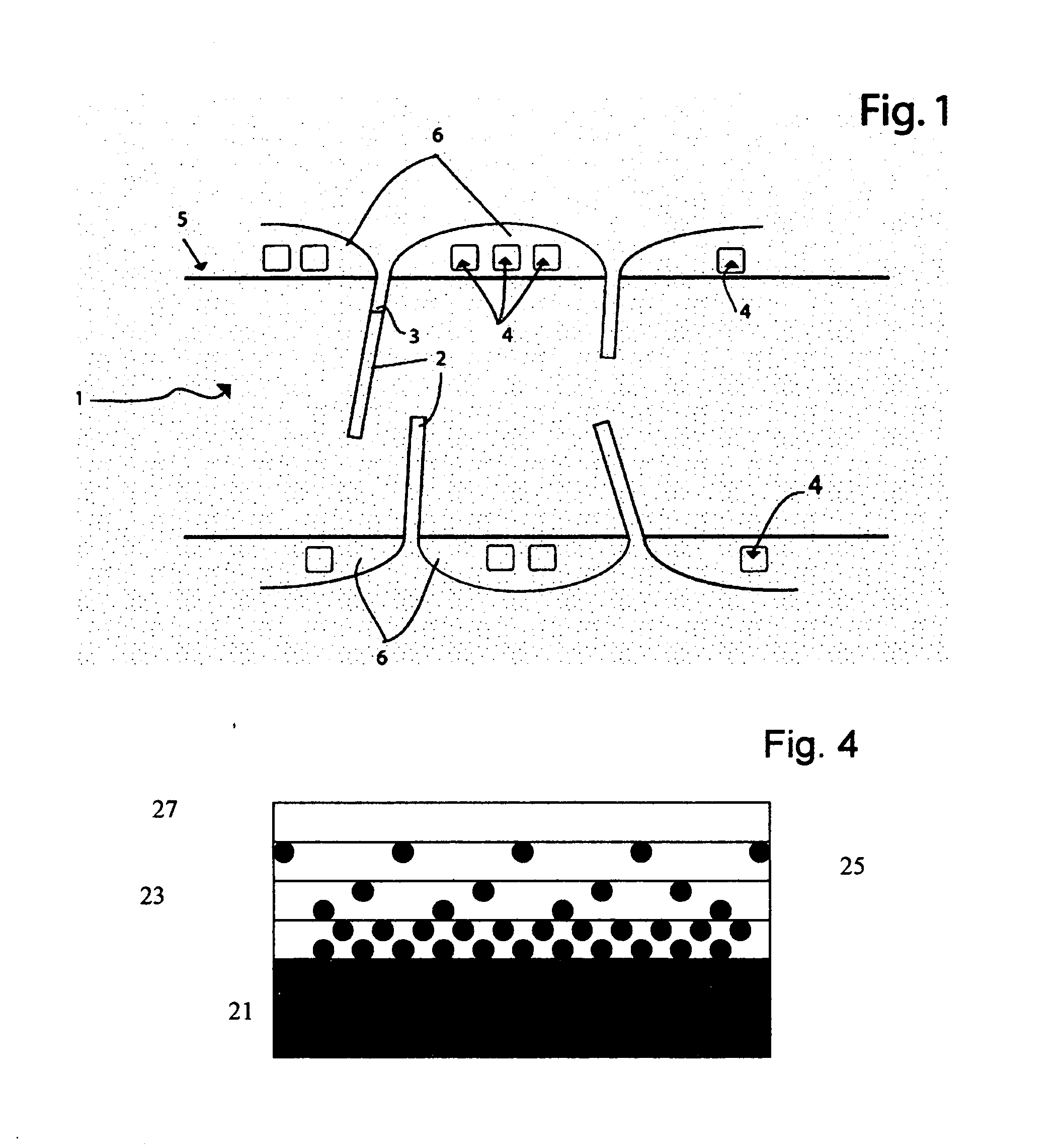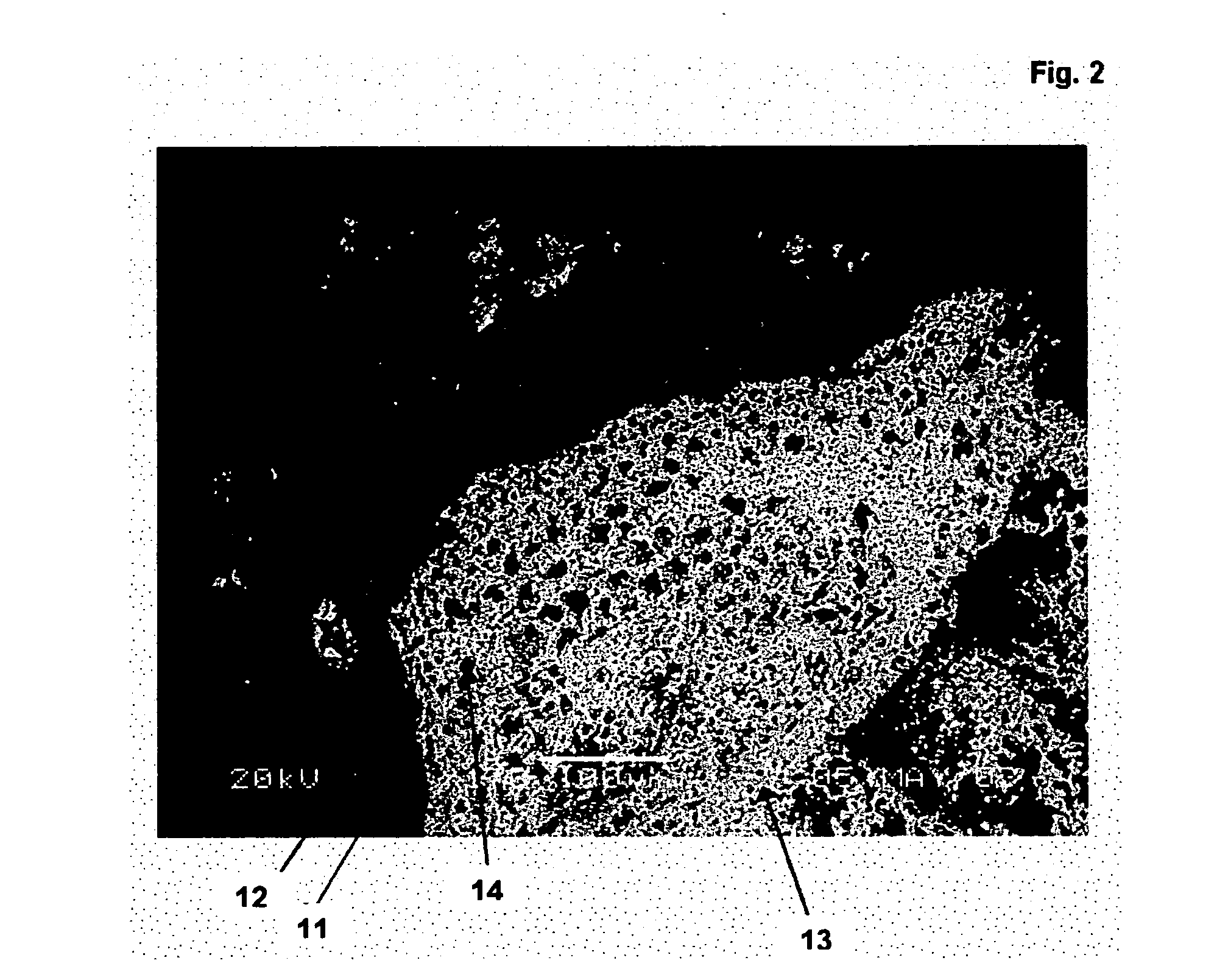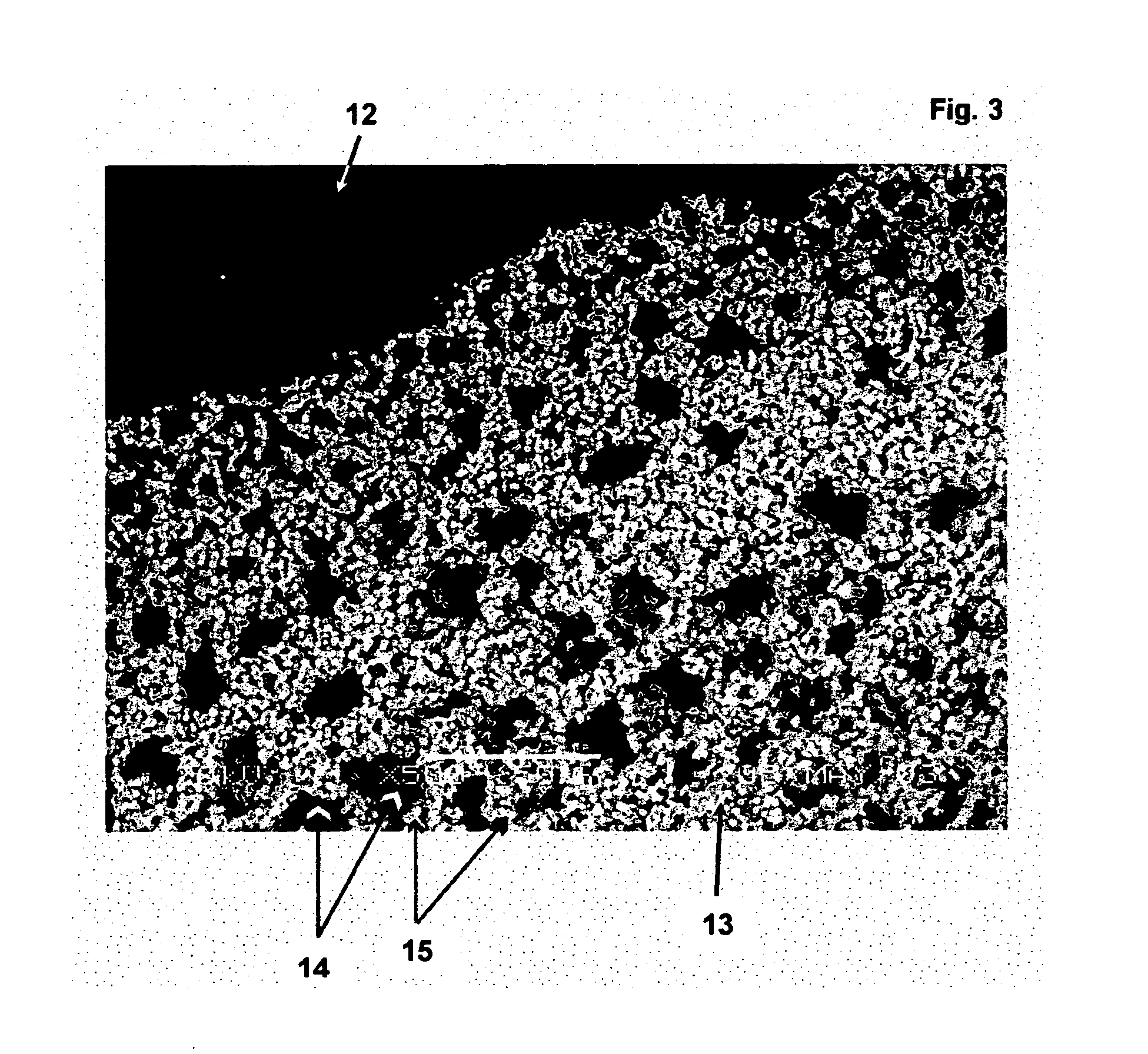Antimicrobial activated carbon and use thereof
a technology of activated carbon and antimicrobial activity, which is applied in the field of antimicrobial activated carbon, can solve the problems of insufficient time for bacteria to wreak damage, contamination in filters in use is often not to a level that detection is readily noticeable, and achieves excellent and long-lasting antimicrobial properties. , the effect of low surface tension
- Summary
- Abstract
- Description
- Claims
- Application Information
AI Technical Summary
Benefits of technology
Problems solved by technology
Method used
Image
Examples
examples 1 and 2
COMPARATIVE EXAMPLE 1
[0090] An antimicrobial curable coating composition was prepared by adding AglON AJ10D silver zeolite antimicrobial agent (2.5% silver) (AglON Technologies, Inc., Wakefield, Mass.) to a hydrophilic acrylic binder / coating supplied by Surface Solutions Laboratories of Concord, Mass. in an amount sufficient to elevate the level of the AJ10D antimicrobial agent to 58% by weight, based on the total solids of the antimicrobial curable coating composition. The antimicrobial coating composition was then applied to conventional consumer water filter grade granular activated carbon by two different methods. In Example 1, the activated carbon was placed in a vessel and sprayed with the coating as the particles were churned in order to coat essentially 100% of the exposed surface. In Example 2, the activated carbon particles were laid out in a monolayer on a surface and a layer of the antimicrobial coating sprayed over the particles to essentially cover the upper, exposed ...
example 3
COMPARATIVE EXAMPLE 4
[0095] A second set of tests was conducted comparing the long-term performance of a commercial filter, a Brita filter, and a second filter prepared using the granular activated carbon of Example 2 above. In this test, the carafes were modified with a discharge means to allow for continual, automated operation. During testing, the modified carafes were placed into an automated filling system that included sensors to determine the level of water in the filling reservoir. The sensors are connected to solenoid valves that turn the filling water off when the filling reservoir is full (1 liter) and turn the filling water back on when the filling reservoir is empty, i.e., when the full liter of water has been filtered. The system also includes in-line flow meters that indicate the total volume of water that has passed through the filter as well as means for removing effluent from the discharge means for testing. The results of this comparative study, presented as silv...
example 4 and 5
[0097] An antimicrobial thermoplastic powder was prepared by compounding 30 parts by weight of AglON AJ10D silver zeolite antimicrobial agent (2.5% silver) (AglON Technologies Inc. Wakefield, Mass.) into 70 parts by weight of Zytel® nylon (DuPont, Wilmington, Del.) The compounded material was ground to form a fine powder of approximately 500μ mean particle size. To demonstrate the versatility of the present invention, GAC was then coated with the antimicrobial nylon by two methods as follows:
[0098] In Example 4, 15.4 grams of the antimicrobial nylon powder was combined with 80 grams of a conventional GAC and dry blended at room temperature. The mixture was placed in a steel dish and the dish then placed in an oven and the oven temperature elevated to 310° C. for 55 minutes, then to 320° C. for 17 minutes and, finally, to 330° C. for 23 minutes. The dish was removed from oven and the contents stirred gently while cooling. The stirring helped smear the molten nylon across the surface...
PUM
| Property | Measurement | Unit |
|---|---|---|
| Fraction | aaaaa | aaaaa |
| Fraction | aaaaa | aaaaa |
| Fraction | aaaaa | aaaaa |
Abstract
Description
Claims
Application Information
 Login to View More
Login to View More - R&D
- Intellectual Property
- Life Sciences
- Materials
- Tech Scout
- Unparalleled Data Quality
- Higher Quality Content
- 60% Fewer Hallucinations
Browse by: Latest US Patents, China's latest patents, Technical Efficacy Thesaurus, Application Domain, Technology Topic, Popular Technical Reports.
© 2025 PatSnap. All rights reserved.Legal|Privacy policy|Modern Slavery Act Transparency Statement|Sitemap|About US| Contact US: help@patsnap.com



